If you travel the world to admire its natural beauty and discover rare wildlife, then the Galapagos Islands need to be on your bucket list.
The islands even gave Charles Darwin his inspiration for his Theory of Evolution. While exploring the islands he noticed that many animals were similar, but not exactly the same. His research gave birth to the concept of evolution and natural section that we know today.
Many of these animals still flourish, thanks to the islands’ isolated location and the lack of natural predators. Some of the animals feel so comfortable here that they don’t shy away when humans arrive on shore and you can easily get close enough for a picture. Here are 10 animals that you can expect to meet in Galapagos Island.
Galápagos Sea Lions
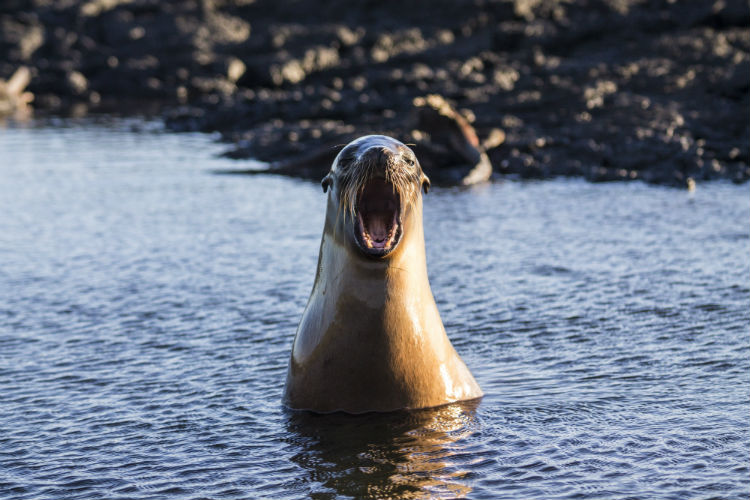
When you arrive on these islands, it’s likely these playful creatures will greet you on the beach. Galapagos Sea Lions are very social creatures and often spotted sun-bathing on the sandy shores. They can be found on all the island within the Galapagos archipelago.
Galápagos Giant Tortoise
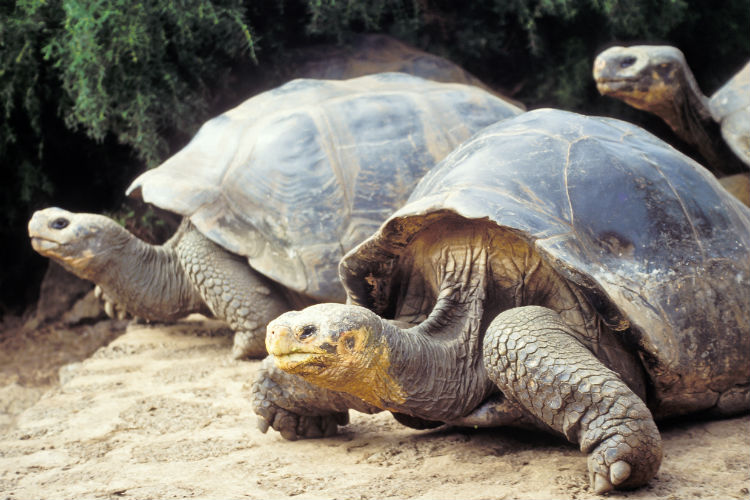
The giant tortoise family might outlive every other vertebrate on earth, but they are not easy to find: they only exist on the Galapagos Islands and the Indian Ocean Islands.
The Galápagos tortoise is native to all seven Galapagos Islands, but there are variations. On islands with humid highlands, they are larger, with domed shells and short necks. On islands with dry lowlands, the tortoises are smaller, with saddleback shells and long necks. These differences contributed highly to Darwin’s theory of evolution when he visited the islands in 1835.
Marine Iguanas
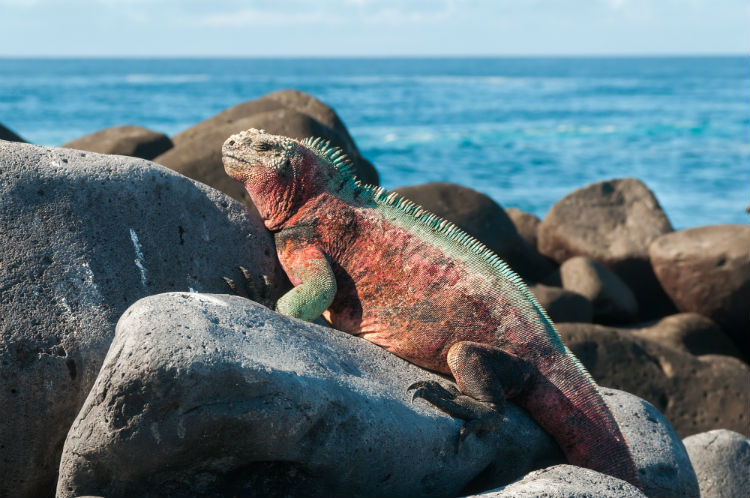
Iguanas are associated with the Galapagos Islands, and they’re constantly popping up in promotional photos. While you can find Iguanas around the world, the Marine Iguana only exists in the Galapagos Islands. These lizards have the unique ability (among modern lizards) to forage in the sea. They mainly live in colonies on rocky shores.
Galapagos Penguins

The Galapagos Penguin is the only penguin you can find in the northern hemisphere. It is also the second smallest specie of penguin, after the small penguin. You’ll spot them on the Fernandina Island and the west coast of Isabela Island, though smaller populations can be found across the archipelago.
Waved Albatross
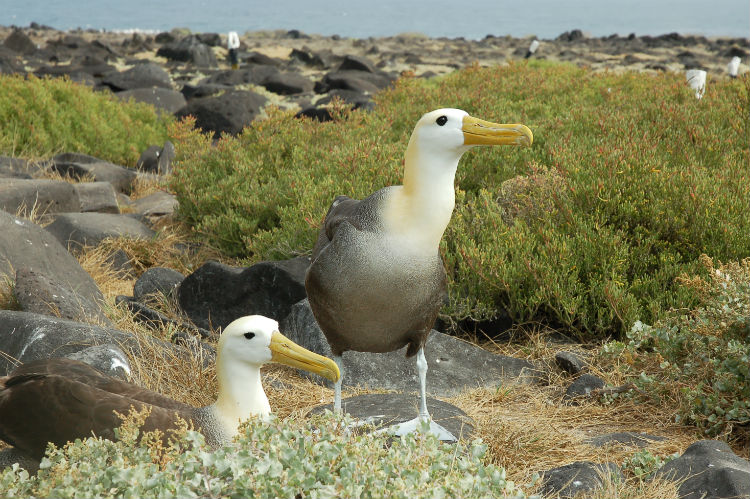
The Waved Albatross is one of two animals on this list to occasionally leave the islands. They split their time between South America and the Galapagos Islands: the first to hunt, and the second to breed. They fly this long journey thanks to their slender bodies and large wings, which creates a phenomenon known as dynamic soaring. You’ll see them launching off from high coastal cliffs, and effortless fly for miles.
Galapagos Hawk
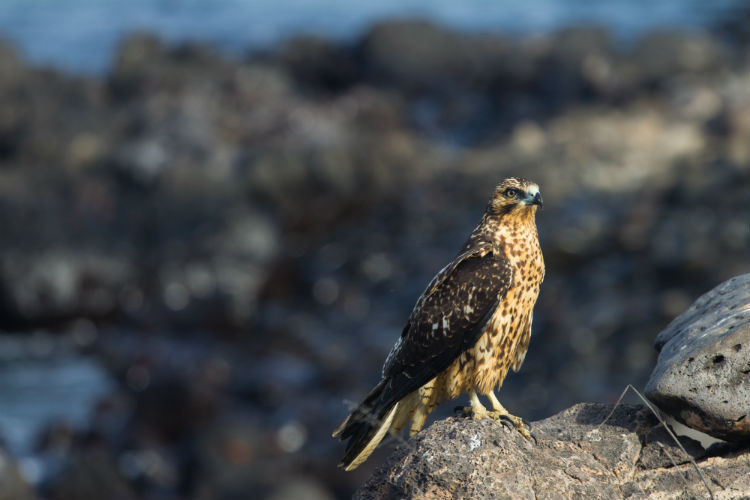
The Galapagos Hawk is one of the world’s rarest raptors, with an estimated population of just 150 breeding pairs. They are mostly seen on the main islands Isabela and Fernandina, but they are extinct on the islands Baltra, Daphne, Floreana, San Cristobal and Seymour.
Galápagos Mockingbirds

The Galápagos Mockingbird is one of four mockingbird species endemic to the Galápagos Islands, and all four are thought to share a common ancestor. The Galapagos Mockingbird is the most widespread of all the mockingbirds, and can be found on most of the islands.
Galápagos Green Turtle
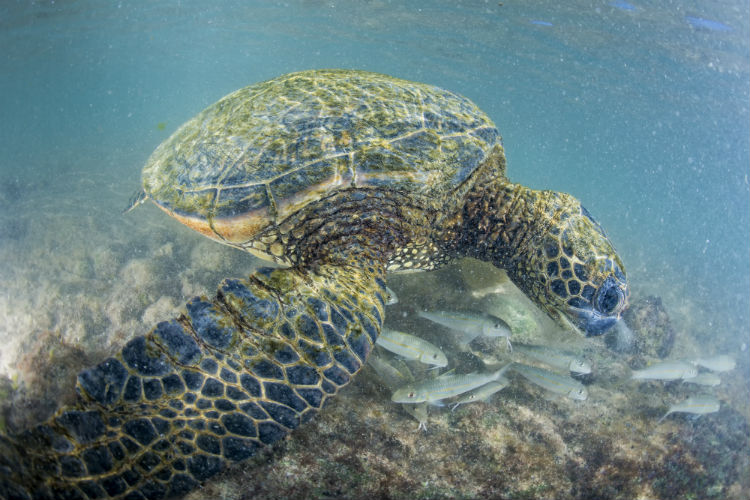
The Galapagos Green Turtle is only subpopulation of sea turtles to nest in these islands. They do however migrate on occasion and can be found exploring the Pacific Ocean. It’s actually only the females that ever come in to shore though, in order to hatch their eggs. The males stay submerged in the warm waters for most of their lives.
Blue-Footed Booby
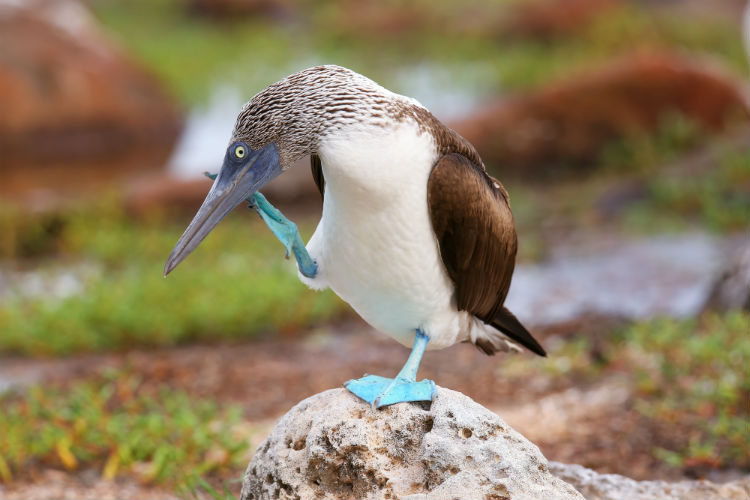
The blue-footy booby is a marine bird that takes its name from the colour of its feet, and its clumsiness (booby is derived from the Spanish word bobo). They live across the subtropical Pacific Islands, but more than half of all breeding pairs nest on the Galápagos Islands. Young blue-footed boobies do not move very far from where they were born, leading to large congregations in dense colonies.
Darwin’s Finches
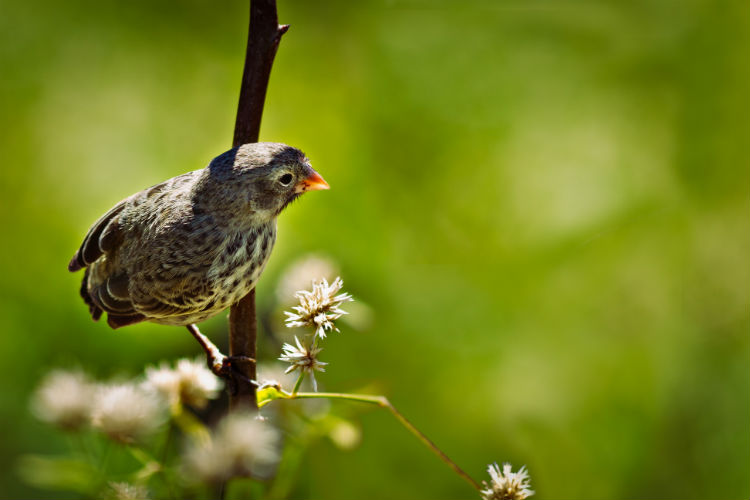
We can’t talk about the Galapagos Islands without mentioning the animal that gave Charles Darwin his eureka moment. Darwin’s Finches actually refers to 15 different species of small birds, each displaying a similar body type and colouring but with markedly different beaks. It is believed that the beaks evolved over many years as each bird adapted to their own food source – aka Darwin’s theory of Evolution.

